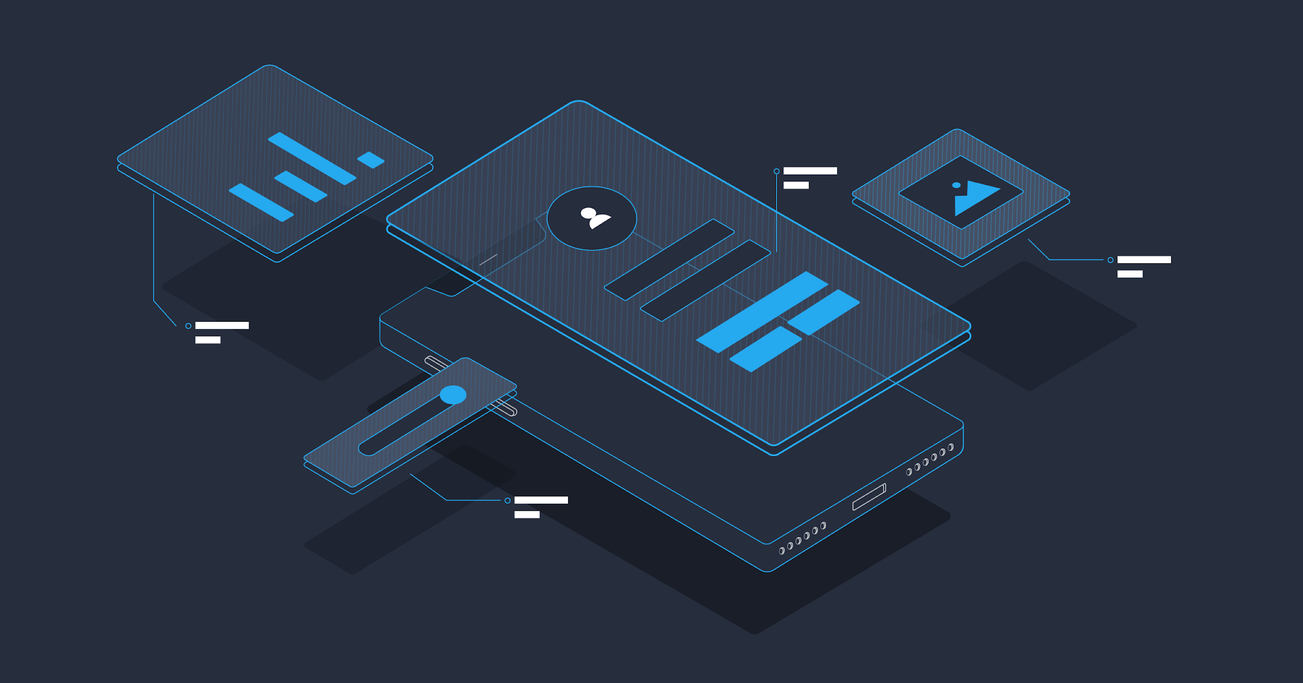Information Architecture Principles for Mobile (With Infographic)
By applying information architecture principles to mobile sites and apps, designers infuse content with much-needed structure and help users accomplish their goals with ease.
By applying information architecture principles to mobile sites and apps, designers infuse content with much-needed structure and help users accomplish their goals with ease.
Micah helps businesses craft meaningful connections through branding, illustration, and design.
Information architecture is the practice of labeling and organizing content to enhance findability and usability. In a mobile-first world, information architecture is inextricably linked to mobile navigation patterns and design best practices. By applying information architecture principles to mobile sites and apps, designers infuse content with much-needed structure and help users accomplish their goals with ease.
Successful mobile design is always somewhat invisible. Users feel as though their interactions are guided by instinct. The intent behind design features and components is apparent. Everything “just works.”
This is true of information architecture (IA). In the context of mobile design, IA is the practice of labeling and giving structure to digital content. IA has two primary concerns:
- Identify and define the content and functionality that exist within mobile interfaces.
- Determine how different pieces of content within mobile interfaces relate to each other.
Both are rooted in research and viewed through the lens of user needs and desires.
Information architects create content structure by:
- Classifying mobile content
- Auditing content for quality
- Establishing user-centric relationships between content
- Defining naming conventions for content
- Generating navigation components that make content easier to find
All of this work is behind the scenes, resulting in spreadsheets and diagrams. Mobile UIs reference information architecture, but IA doesn’t appear within UIs as a design component.

IA Supports Mobile Navigation
The outgrowth of information architecture is navigation. Oftentimes, IA and navigation are used interchangeably, but they are distinct aspects of mobile UX. The aim of mobile navigation is to help users find information and functionality quickly and intuitively.
Navigation components, such as buttons and icons, lead users toward desired outcomes. On mobile devices, navigation patterns like Nested Doll and Dashboard give designers time-tested solutions for composing layouts and placing navigation components.
Taking a step back, we see the symbiotic relationship between information architecture and navigation. IA establishes order. Navigation bolsters findability. Each can exist without the other but not to its full potential.

IA and Navigation Impact Mobile Design
A discussion of IA and navigation is incomplete without mentioning mobile form factors and design best practices. Both profoundly impact mobile UX. For instance:
- Because mobile screens are smaller, essential content should be prioritized, and all extraneous content should be eliminated.
- The size and spacing of touchscreen targets ought to enable error-free interaction with navigation components.
- Content must be legible, especially text. If mobile type is too small, it’s hard to read. If it’s too big, it causes line breaks that lead to reader fatigue.
- User hand positions impact the placement of navigation components. Their relationship needs to be considered on every screen.
- Data input should be kept to a minimum. Users grow frustrated when frequently asked to enter text into mobile form fields.
It’s also worth noting that mobile sites and native apps present unique design challenges. For example, mobile sites have limited gesture controls, while native apps are able to leverage functionality like cameras and compasses.
Information Architecture Principles Enhance Mobile UX
Information architecture, mobile navigation patterns, and mobile design best practices work in harmony to enhance mobile UX. No pursuit is most prominent. Each must integrate with the others to create the seamless mobile experiences users desire.

Articles addressing mobile design best practices abound, but designers need a streamlined resource that summarizes IA principles and navigation patterns from a mobile perspective.

Further Reading on the Toptal Blog:
Understanding the basics
What are the main components of information architecture?
Mobile information architecture has two primary concerns: 1.) Identify and define the content and functionality that exist within mobile interfaces. 2.) Determine how different pieces of content within mobile interfaces relate to each other. Both concerns are viewed through a user-centric lens.
What is the information architecture of a website?
Information architecture is the labeling and organizing of information. There are several information architecture principles for websites and mobile UIs. For instance, the principle of growth encourages designers to build UIs that allow for the exponential increase of digital content.
What is information architecture in UX?
Information architecture supports UX by defining digital content and structuring it in a way that bolsters navigation. In turn, content findability increases, and user experiences are enhanced. Given the rapid influx of digital content, mobile information architecture is of utmost importance.
Why is information architecture important?
Adhering to information architecture best practices is especially important for content-rich sites and apps. IA focuses on labeling and organizing content in ways that align with users’ needs and desires. Coupled with a sound navigation scheme, IA allows users to quickly and intuitively complete their goals.
Micah Bowers
Vancouver, WA, United States
Member since January 3, 2016
About the author
Micah helps businesses craft meaningful connections through branding, illustration, and design.

